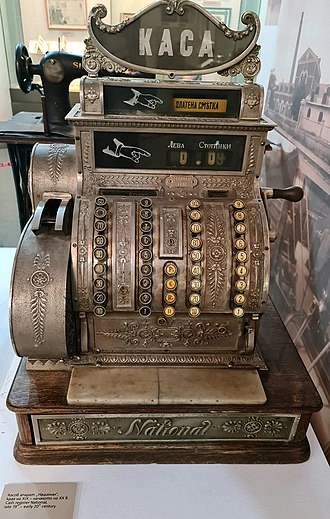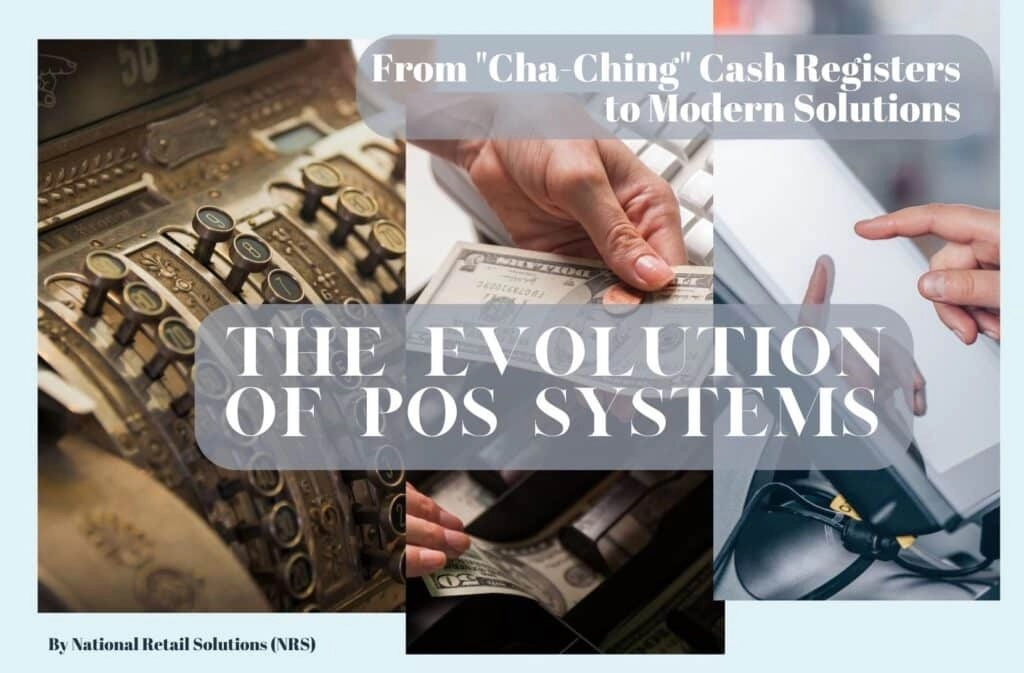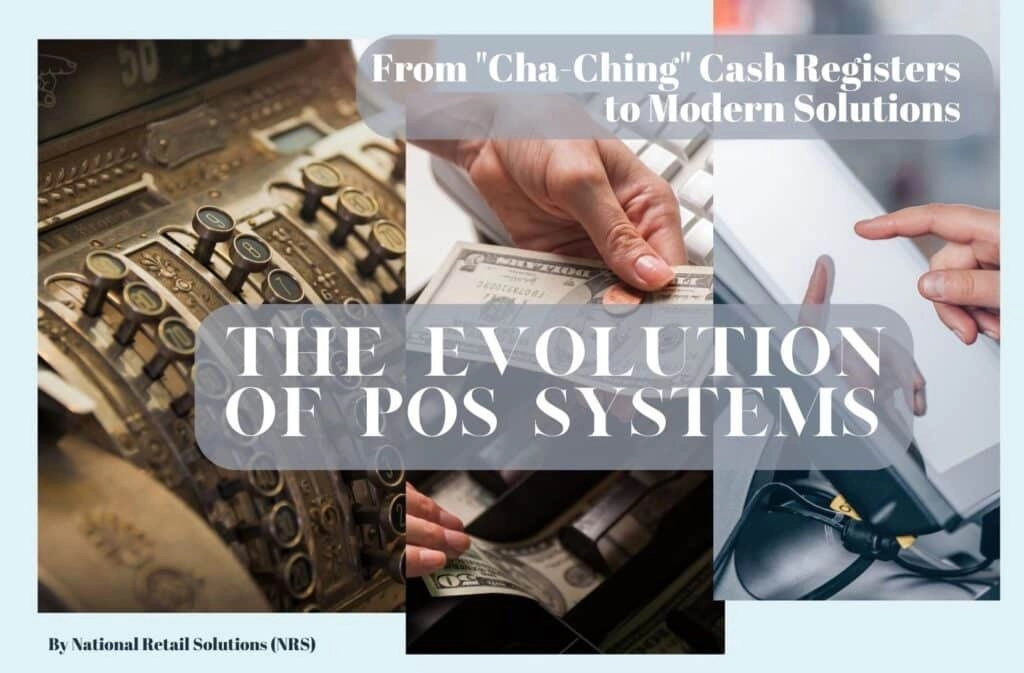The Evolution of Cash Register Technology and Modern POS Systems

Are you curious about the evolution of cash register technology and how today’s modern systems came to be? Whether you’re a retail business owner, tech enthusiast, or someone looking to upgrade your point of sale setup, understanding this journey is key. From the very first mechanical cash registers to the cloud-based, feature-packed POS systems we use now, each step in this evolution has reshaped how businesses handle transactions and serve customers.
In this post, you’ll get a clear, straightforward look at how cash registers transformed over time, highlighting the major innovations that boosted efficiency, security, and usability. Plus, you’ll see how companies like SDLPOS are leading the charge with cutting-edge hardware solutions designed to meet today’s retail challenges.
Let’s dive into the fascinating history and future of cash register technology—so you can make smarter decisions and keep your business ahead of the curve.
The Origins of Cash Registers Mechanical Beginnings

Understanding the evolution of cash register technology starts with its origins in the late 19th century. The first cash register was invented in 1879 by James Ritty, a saloon owner who wanted to solve a common problem among retailers and service businesses—employee theft and inaccurate cash handling. Before the cash register, there was little accountability for cash transactions, often leading to lost revenue.
How Mechanical Cash Registers Improved Accountability
Ritty’s invention was simple yet revolutionary. The mechanical cash register introduced a reliable system to prevent employee theft and improve financial accountability. When a sale was recorded, the machine would lock the cash drawer and produce an audible bell sound, signaling a transaction had been made. This process deterred dishonest staff from pocketing money without recording a sale.
Mechanical Operation Features
The early cash registers operated fully mechanically. They utilized manual levers pushed by the cashier to enter the transaction amount. Each key press activated internal gears connected to a printing mechanism that generated printed receipts. These physical records allowed shop owners to verify sales and track daily income. The ringing bell provided a clear alert to both employees and customers that the transaction was logged.
This design combined simple mechanical ingenuity with practical business needs. It not only enhanced trust in daily operations but also laid the groundwork for future innovations in retail technology.
For retailers interested in the deeper history behind cash registers and their benefits, check out how the cash register was invented and why it matters.
Upgrading from these early mechanical models has transformed retail efficiency. Understanding these roots helps appreciate modern systems that continue to build on the foundation set by Ritty’s original cash register invention.
Transition to Electromechanical Cash Registers Mid 20th Century

As cash register technology evolved, the mid-1900s saw a significant shift with the introduction of electromechanical registers. These devices combined traditional mechanical parts with electric components, creating a hybrid system designed to make transactions faster, more accurate, and simpler to manage.
How Electromechanical Registers Improved Operations
Adding electric motors and switches helped reduce the manual effort needed to operate the cash drawer and register keys. This innovation meant clerks could ring up sales more quickly, speeding up the checkout process during busy hours. Plus, electric components supported better accuracy by minimizing human error tied to manual lever pulls and calculations.
Increased Popularity and Market Adoption
By the 1950s and 60s, electromechanical cash registers became widespread among retailers operating in the United States. Their ease of use and efficiency appealed to businesses of all sizes, from local grocery stores to department stores. The ability to integrate bells, printed receipts, and more reliable cash drawers helped boost accountability and reduce employee theft—a critical factor in their growing adoption.
Key Benefits That Made Electromechanical Registers a Market Standard
- Faster transaction recording compared to purely mechanical models
- Improved accuracy through electric-assisted key presses and calculations
- Simplified operation with fewer manual steps required by employees
- Enhanced security features like controlled cash drawer openings and audible alerts
The shift to electromechanical technology set the stage for the later development of electronic cash registers and, eventually, fully digital point of sale systems. This era solidified the cash register as an essential retail tool adapted to the growing demands of American businesses.
Emergence of Electronic Cash Registers in the 1970s and 80s

The 1970s and 80s marked a major leap in the evolution of cash register technology with the arrival of Electronic Cash Registers (ECRs). Moving away from the purely mechanical designs, ECRs introduced electronic circuits and digital displays, making transactions more accurate and faster. This shift helped retailers handle more complex sales tasks without the delays and mistakes common in earlier machines.
Key Features That Changed Retail Operations
Electronic cash registers brought several important upgrades:
- Programmable Functions: Retailers could set up item prices, tax rates, and discounts directly into the system, eliminating manual calculations.
- Basic Sales Reporting: ECRs generated reports summarizing sales data, helping business owners track performance easily.
- Improved Transaction Options: They supported multiple payment types and added flexibility in processing returns, exchanges, or partial payments.
- Integration with Barcode Scanners: This innovation sped up checkouts, cutting down wait times and human errors.
- Receipt Printers: Electronic printing offered clearer, more detailed receipts, improving both record-keeping and customer satisfaction.
These advancements made the electronic cash register not just a tool for cash handling but a vital part of retail management. Businesses in the U.S. quickly adopted ECRs due to their ability to streamline operations and boost accuracy, setting the stage for the more complex Point of Sale systems that followed.
For those interested in detailed insights into how modern systems evolved from these early innovations, check out Pos and Cash Register.
The Rise of Point of Sale POS Systems and Computers in the 1990s and 2000s
By the 1990s, cash register technology took a major leap with the introduction of Point of Sale (POS) systems. Unlike traditional cash registers, these were fully integrated computer-based solutions designed to handle much more than just ringing up sales. This shift marked a turning point in the evolution of retail payment technology and transformed how businesses managed their daily operations.
What POS Systems Bring to the Table
POS systems combined hardware and software to deliver a complete package that stores couldn’t live without. They provided:
- Detailed sales data to track exactly what was selling and when.
- Inventory management that updated stock levels in real-time.
- Support for multi-store connectivity, allowing businesses with several locations to manage sales and stock centrally.
- Software-driven technology allowed for customization according to specific business needs.
- Touchscreen interfaces made the systems intuitive and faster to use compared to old mechanical or early electronic registers.
These features helped retailers streamline operations, reduce errors, and improve customer checkout experience.
Transforming Retail Business Operations
The introduction of POS systems had a global impact on retail. Businesses could now rely on data analytics to make smarter decisions—whether that was restocking best-sellers, managing promotions, or monitoring employee performance. The systems also enabled seamless integration with other technologies like barcode scanners and receipt printers, making checkout processes smoother and more efficient.
For American businesses, especially those handling high transaction volumes or multiple stores, POS systems became indispensable. They offered a scalable, reliable way to keep operations running without the headaches of manual tracking or outdated hardware.
Key Benefits to Businesses Today
- Improved accuracy and speed in transactions.
- Better control over inventory and sales data.
- Easier employee management and accountability.
- Integration with emerging retail tech trends, laying the groundwork for future upgrades.
The rise of computer-based POS systems set the stage for today’s cloud-based and mobile POS solutions, driving ongoing innovation in retail technology and helping businesses keep up with fast-changing customer expectations.
Modern Cash Register Technology Cloud Based and Mobile POS
In the 2010s and beyond, cloud computing and mobile devices have revolutionized how retailers manage sales and customer interactions. Unlike traditional cash registers, today’s systems are powered by the cloud, allowing businesses to access real-time analytics and manage operations remotely from anywhere. This shift has made retail technology more flexible, responsive, and data-driven, which is essential for staying competitive in the fast-paced U.S. market.
Key Features of Cloud Based and Mobile POS Systems
- Real-time analytics and reporting: Track sales, inventory, and customer behavior instantly, helping you make smarter decisions on the fly.
- Remote management: Handle updates, pricing, and staff permissions from any location using smartphones, tablets, or laptops.
- Customizable software: Tailor your system to fit your specific business needs, whether you run a small local shop or multiple stores.
- Mobile payment support: Accept all modern payment methods including Apple Pay, Google Wallet, and contactless cards right at the checkout or on the go.
Enhanced Security and Compliance
Security is top of mind for local U.S. businesses, and modern cash register technology reflects that. Cloud POS systems come with strong encryption protocols and meet strict PCI compliance standards, which protect customer card data and build trust.
Hardware Innovations with SDLPOS Systems
Hardware has also evolved alongside software advancements. SDLPOS offers durable, easy-to-use cash register hardware designed for today’s retail environment, including:
- Compact mobile terminals perfect for pop-up shops and food trucks
- Sleek touchscreen registers with fast processing speeds
- Reliable receipt printers integrated with cloud-based systems
These hardware solutions are built to complement the cloud and mobile software, providing a seamless checkout experience and helping businesses keep pace with shifting retail trends.
cloud-based and mobile POS systems powered by companies like SDLPOS are changing the retail tech landscape. They offer improved flexibility, detailed data insights, stronger security, and the hardware support US businesses need to thrive in modern retail.
Future Trends in Cash Register Technology and Innovations by SDLPOS
The evolution of cash register technology is far from over. As retail needs grow and change, emerging technologies are shaping the future of how businesses handle transactions and customer interaction.
Artificial Intelligence and IoT Integration
AI integration is becoming a game-changer for cash registers and POS systems. With AI, systems can analyze sales patterns, predict inventory needs, and even offer personalized promotions in real time. This means smarter decision-making and less guesswork for business owners.
At the same time, the Internet of Things (IoT) is making cash registers more connected than ever. Sensors and smart devices allow for seamless communication between cash registers, inventory systems, and even customer apps. This connectivity improves efficiency and helps create smoother checkout experiences.
Biometric Payments for Security and Speed
Biometric payments are gaining traction as a secure and fast way to process transactions. Using fingerprints, facial recognition, or iris scanning, biometric systems reduce fraud risks and speed up checkout lines. For businesses, this means greater payment security and customer trust.
Predictive Analytics and Customer Behavior Insights
Modern cash registers are becoming more than just transaction tools. By utilizing predictive analytics, POS systems can analyze customer buying habits, forecast trends, and tailor marketing efforts. This level of insight helps local U.S. retailers better understand their customers and improve sales strategies.
How SDLPOS Is Leading Innovation to Meet Future Demands
SDLPOS is right at the forefront of these advancements, offering hardware solutions designed to integrate AI, IoT, and biometric capabilities seamlessly. Their systems support:
- Cloud-based management for real-time data access
- Flexible customization tailored to different business sizes and models
- Advanced security protocols including encryption and PCI compliance
- Easy upgrade paths that keep pace with new technology trends
By focusing on reliable, adaptive hardware, SDLPOS ensures U.S. businesses stay competitive as cash register technology evolves.
The future of cash registers is smart, connected, and secure. With these innovations, companies are not just keeping up—they’re setting the pace in retail technology trends.
Why Upgrading Your Cash Register Technology Matters for Your Business
Upgrading your cash register technology is more than just a routine update — it’s a strategic move that can drive efficiency, accuracy, and better customer experiences. In today’s fast-paced retail environment, relying on outdated systems can slow down transactions, increase errors, and leave your business vulnerable to theft. Here’s why investing in modern cash register and Point of Sale (POS) systems is essential for your retail or restaurant business.
Increase Efficiency and Accuracy
Modern cash registers and POS systems are designed to speed up checkout times and reduce human errors. With automated calculations, integrated barcode scanning, and seamless payment processing, your staff can close sales faster without fumbling with manual inputs. This not only improves the flow during busy hours but also helps track every transaction accurately, minimizing discrepancies in your daily cash drawer and sales reports.
Enhance Customer Experience
A quick and smooth checkout process leaves a lasting impression on customers. Modern cash registers come with features like touchscreens, multiple payment options including mobile payments, and detailed printed or digital receipts. This means your customers avoid long wait times and can pay using their preferred method. When customers see a business keeping up with retail technology trends, it builds trust and loyalty.
Reduce Errors and Theft
Manual cash registers and older systems have a higher risk of mistakes and employee theft. New cash register technology improves accountability through digital logs, user-specific login credentials, and audit trails that monitor transactions closely. This transparency deters fraud, helps identify issues quickly, and ultimately protects your profits.
Adapt to New Payment Methods and Retail Trends
Today’s consumers expect to pay with credit, debit, mobile wallets, or even contactless cards. Modern cash registers equipped with advanced POS software easily support these diverse payment methods, ensuring you don’t lose sales because of limited options. Plus, cloud-based systems allow for remote management and real-time updates, keeping your business aligned with ongoing retail payment technology evolution and customer preferences.
Upgrading your cash register isn’t just about hardware — it’s about future-proofing your business for smooth operations and satisfied customers. For businesses in the United States, especially small to medium-sized retailers and restaurants, choosing the right system tailored to your needs is critical. Explore tailored hardware solutions and the benefits of modern systems at SDLPOS cash register solutions.
Choosing the Right Cash Register Hardware for Your Business
Picking the right cash register hardware is a big deal. It can make or break how smoothly your point of sale (POS) runs and how well your business performs. When you’re shopping for hardware, keep these key points in mind to get the best fit for your setup.
Consider Your Business Size and Transaction Volume
Your business size directly affects the kind of hardware you need. A small boutique or local cafe with lower transaction volume won’t have the same needs as a busy supermarket or chain store.
- Small businesses might do well with compact, mobile POS devices.
- Medium to large businesses need more robust hardware that can handle large transaction volumes without slowing down.
- Also, think about peak times. Will your system stand up to rush hour or seasonal spikes?
Ensure Compatibility with Software and Systems
Your hardware has to play nicely with your current software and any third-party apps you use for inventory, accounting, or payments.
- Confirm the cash register supports your POS software and updates.
- Look for hardware that integrates well with payment processors, barcode scanners, and receipt printers.
- Staying compatible means fewer headaches and smoother daily operations.
Prioritize Hardware Durability and Ease of Use
Durability matters, especially in busy retail spots where equipment can take a beating.
- Choose hardware made from sturdy materials designed for constant use.
- User-friendly interfaces speed up staff training and reduce mistakes.
- Reliable hardware with solid customer support is a lifesaver when things go wrong.
Why SDLPOS Hardware Solutions Work for You
SDLPOS understands US businesses and offers tailored cash register hardware built for real-world needs.
- They provide customized solutions suited to your business size and industry.
- Their equipment ensures seamless software compatibility, so integration is smooth.
- Durability, ease of use, and excellent customer support come standard.
- SDLPOS keeps you ready for new payment types and retail trends, ensuring your business stays ahead.
By focusing on these points—business size, software compatibility, durability, and trusted partners like SDLPOS—you set your business up with the right cash register hardware to boost efficiency and serve your customers better.
